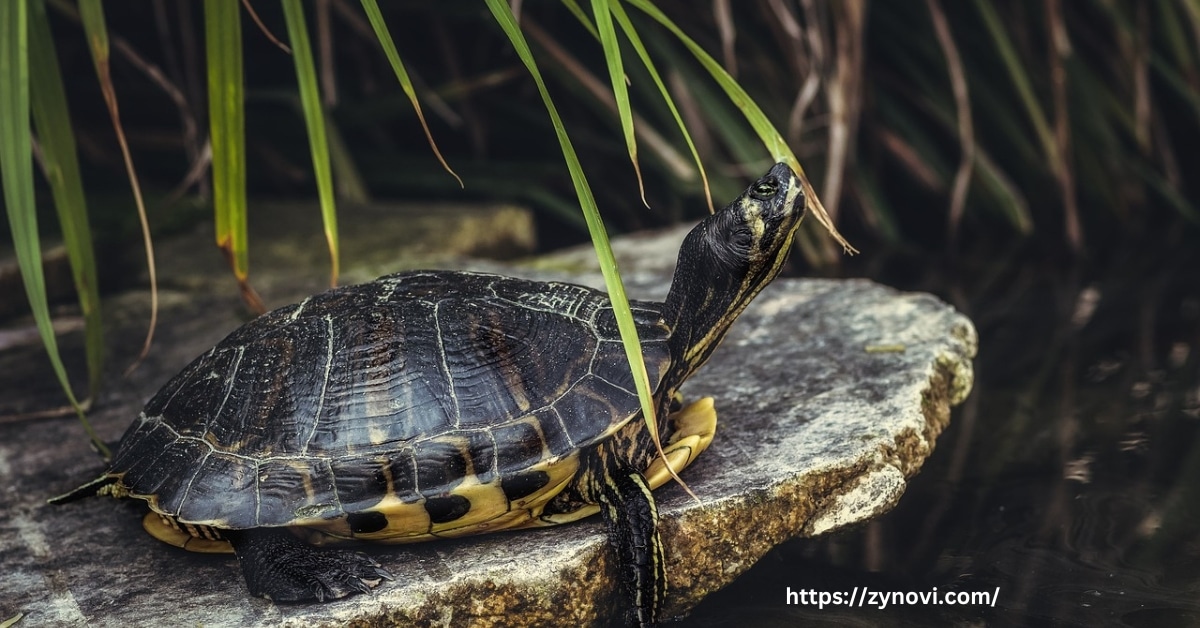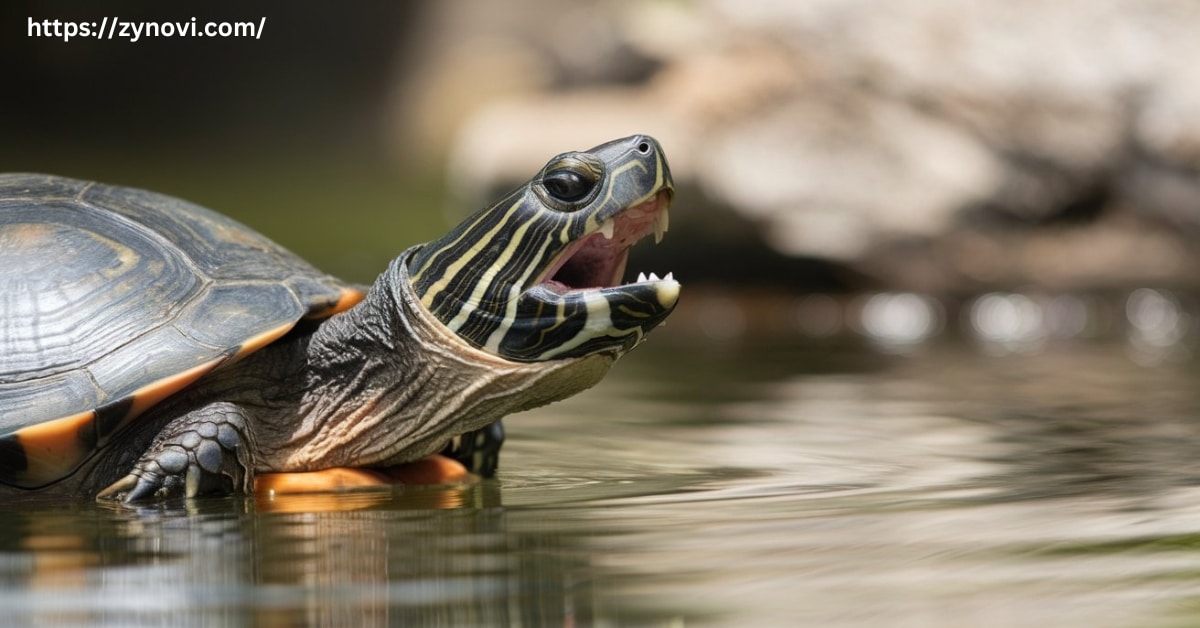Do turtles attack humans? It’s a question that might cross your mind when you see these slow moving creatures, but the truth is a little more complex than you might think. While turtles are generally peaceful, there are instances where they may bite, especially when they feel threatened or provoked.
If you’re curious about how and why turtles might bite and how to stay safe around them keep reading. This article will help you understand turtle behavior, debunk common myths, and teach you the best ways to interact with these fascinating reptiles without getting hurt.
What Are Turtles?
Turtles are reptiles that belong to the order Testudines. Known for their hard shells and slow movements, they have existed for over 200 million years. Turtles can be found in diverse habitats, including forests, deserts, rivers, and oceans.
An Overview of Turtles as Reptiles
Turtles are easily recognized by their protective shells, which are part of their skeletal structure. These shells are made up of two parts: the carapace (top shell) and the plastron (bottom shell).
Key Facts About Turtles:
- Lifespan: Many species live 20–50 years, with some, like sea turtles, reaching over 100 years.
- Classification: Turtles are divided into aquatic (e.g., sea turtles) and terrestrial turtles (e.g., box turtles).
- Diet: Most turtles are omnivorous, feeding on plants, insects, and small animals.
Types of Turtles and Their Behaviors
Turtles vary greatly in behavior and habitat based on their species.
| Turtle Type | Habitat | Behavior |
|---|---|---|
| Snapping Turtles | Freshwater | Aggressive when threatened, strong bite strength |
| Sea Turtles | Oceans | Migratory, rarely interact with humans |
| Box Turtles | Forests, Grasslands | Shy, retract into shells when scared |
| Softshell Turtles | Rivers, Lakes | Agile swimmers, defensive in nature |
Do Turtles Attack Humans?

Do all turtles bite? While most turtles are non-aggressive, they may bite under specific circumstances. Bites are typically defensive, not predatory.
General Disposition of Turtles
In general, turtles are solitary and shy creatures. They avoid human interaction unless provoked. However, certain species, like snapping turtles, are exceptions due to their territorial nature.
Why Turtles Bite:
Defense Turtles bite defensively when they feel cornered or perceive a threat. Their natural instinct is to protect themselves.
Mistaken Identity If fingers or toes resemble food, turtles may bite out of confusion. This is especially common during feeding interactions.
Territorial Aggression During the mating season, snapping turtles can become highly territorial. They may bite to defend their space or nests from perceived intruders.
When Turtles Bite: Situations That Trigger Aggression
Snapping turtles, including common snapping turtles and alligator snapping turtles, are known for their powerful jaws. Their bites can cause severe injuries due to their sharp beaks and strong bite force.
Territorial Behavior Some turtles defend their territory, especially during nesting or mating seasons. Approaching a nesting turtle may provoke an aggressive response.
Unintentional Provocation Turtles may bite if handled improperly or startled. For instance, children trying to pick up a box turtle may unintentionally cause stress, leading to a bite.
Are Turtle Bites Dangerous?
Do turtles bite hurt?: Not all turtle bites are harmful, but they can cause injuries or infections.
Physical Impact of Turtle Bites
- Snapping Turtles: Can exert a bite force of up to 209 Newtons, enough to cause deep wounds or fractures.
- Box Turtles: Rarely bite with force, but their bites may still break the skin.
- Sea Turtle Bite: These bites are generally not dangerous to humans. Sea turtles are non-aggressive and typically avoid interaction, only biting in rare cases of provocation or if they feel threatened.
Risk of Infection
Turtles can carry bacteria like Salmonella, which can infect humans through bites. Proper wound care is essential to minimize risks.
First Aid for Turtle Bites:
- Wash the wound thoroughly with soap and water.
- Apply an antiseptic to prevent infection.
- Seek medical attention for severe bites or if infection symptoms appear.
How to Avoid Turtle Bites

Understanding turtle behavior helps reduce the chances of provoking a bite. By respecting their space and handling them carefully, you can avoid any unwanted interactions.
Dos and Don’ts of Interacting with Turtles
Dos:
- Observe turtles from a safe distance to avoid startling them.
- Always wear gloves when handling turtles to protect yourself and the animal.
- Gently guide turtles off roads without picking them up by the tail, holding them by the sides of their shells.
Don’ts:
- Never grab a turtle by its tail, as this can cause injury and trigger defensive behavior.
- Avoid disturbing nesting turtles or their eggs, as they can become aggressive when protecting their nests.
Recognizing Signs of Aggression or Distress
Turtles show clear signs when they feel threatened. By observing their body language, you can determine if they’re about to become defensive.
- Hissing or snapping sounds: Turtles may hiss or make snapping noises as a warning sign that they feel threatened.
- Sudden head retraction or lunging: A turtle might quickly retract its head or lunge forward when it feels cornered.
- Extended neck and open mouth posture: Turtles may extend their necks and open their mouths to display aggression or prepare for a bite.
What to Do If a Turtle Bites You
Despite precautions, bites can happen. Knowing how to react is vital.
Immediate First Aid Steps
If a turtle bites you, staying calm and following proper first aid steps is crucial to avoid further injury and infection.
- Stay Calm: Avoid panicking and pulling away quickly, as this could cause more damage to the wound or trigger a stronger bite.
- Gently Release: If bitten by a snapping turtle, wait for it to release its grip. For smaller turtles, carefully pry their jaws apart without causing harm.
- Clean the Wound: Wash the bite with clean water and apply an antiseptic to reduce the risk of infection and promote healing.
Managing Emotional and Physical Recovery
If the bite causes anxiety or fear of turtles, take time to learn more about their behavior. Understanding reduces fear and fosters respect for these creatures.
Understanding that most turtles are not aggressive by nature, but act defensively when threatened, can foster respect for these creatures.
Taking the time to learn about their temperament and habits helps shift focus from fear to appreciation, allowing you to recover emotionally while also healing physically. Knowledge can turn a negative experience into an opportunity for growth and understanding.
Understanding Turtle Behavior to Prevent Bites

Turtles rely on instincts and environmental cues. By respecting their natural behaviors, you can avoid harmful encounters.
- Stress factors can significantly increase the likelihood of a turtle bite. Turtles in crowded or unnatural habitats, where they feel trapped or overwhelmed, are more likely to become defensive.
- Rough handling by humans can also cause stress, as turtles may feel threatened when picked up improperly or without warning.
- Additionally, a lack of proper food or adequate space can lead to frustration and irritability, making turtles more prone to aggression.
These stressors disrupt their natural behavior, causing them to bite as a means of self-defense or communication.
Myths and Misconceptions About Turtle Attacks
There are several myths about turtle attacks that need debunking.
Myths: All turtles are harmless One common misconception is that all turtles are harmless, but in reality, species like snapping turtles and softshell turtles can bite with considerable force, leading to serious injury.
Myths: Turtles attack humans Another myth is that turtles attack humans unprovoked; however, bites are almost always a defensive reaction when they feel threatened or cornered.
Myths: Sea turtles are dangerous A third myth suggests that sea turtles are dangerous, yet sea turtles are generally non-aggressive and will avoid human interaction unless provoked.
Understanding these facts helps correct misunderstandings and promotes safe, respectful interactions with turtles.
FAQs
Can sea turtles attack humans?
Sea turtles are peaceful creatures that rarely interact with humans. Attacks are extremely rare and usually involve unintentional contact.
Are snapping turtles more dangerous than other types of turtles?
Yes. Snapping turtles are known for their powerful bites and defensive nature, making them more dangerous when provoked.
How can you tell if a turtle is about to bite?
Signs include an open mouth, lunging movements, and hissing sounds.
What should you do if you find a turtle in your backyard?
Leave it undisturbed or gently guide it to a safer area.
Can pet turtles bite their owners?
Yes, especially if they feel stressed or mistreated. Proper handling minimizes this risk.
Conclusion: Do Turtles Attack Humans?
Turtles are not naturally aggressive, but they can bite when they feel threatened or provoked. Understanding their behavior and recognizing signs of stress or aggression is key to avoiding bites. By respecting their space and handling them properly, you can coexist peacefully with these fascinating creatures.
Turtles are ancient reptiles with unique defense mechanisms, and when approached with care, they pose little danger to humans.
“Knowledge is the key to safety. Respect turtles, and they’ll respect you.” They’ll respect you in return. Understanding their nature ensures a safe and positive interaction for both parties.










